Companies Have Been Put on Notice to Focus on Environmental Justice


The U.S. Environmental Protection Agency (EPA) has long volleyed back and forth from being a lukewarm environmental enforcer to serving as a friend of industry, depending on who is in charge at the White House. Meanwhile, many communities of color have long suffered due to the lack of effective policies centered around environmental justice.
But last week, the EPA announced it will soon provide $50 million for environmental justice initiatives through funds made available under the American Rescue Plan (ARP), the coronavirus stimulus package announced by incoming President Joe Biden on his first day in office. As a response to the ongoing pandemic, the U.S. Congress has set aside such funding for grants, contracts, and programs that identify and take on environmental or public health threats in underserved communities.
For example, one program will allocate $200,000 for a mentoring program in Baltimore, Maryland. A new on-the-job training program will train young adults so they can be employed in full-time jobs within the evolving water industry. Participants will learn skills such as water quality monitoring, sampling, and reporting with the goal to boost water quality in urban and rural communities and, in the long run, find people to fill decent-paying water infrastructure jobs.
That $50 million is only a start. There is talk of even more funds in the next annual federal budget, but of course, considering how polarized Capitol Hill has become, that’s a hope, not an expectation communities can bank on.
Editor's note: Be sure to subscribe to our Brands Taking Stands newsletter, which comes out every Wednesday.
The change of tone, nevertheless, should put companies on notice, and that includes just about any business in any industry — including the energy and logistics sectors.
For example, companies doing business in the oil-rich Gulf Coast have long profited from the U.S. energy boom, but largely at the expense of communities of color. “I have witnessed how the oil and gas industry has dominated the Gulf Coast region at the expense of Black communities, engulfing our neighborhoods with massive amounts of toxic pollution from oil refining and manufacturing,” Beverly L. Wright, the executive director of the Deep South Center for Environmental Justice, recently wrote for Scientific American.
Amazon’s spectacular growth in recent years has also made it a target of environmental justice advocates. In California’s Inland Empire, located east of Los Angeles, for example, local communities have chaffed at the company’s expanded investment in warehouses for several years, saying all the trucks that come with those facilities are polluting their neighborhoods. Amazon says it is responding in kind, with investments such as rooftop solar power and more electric vehicles for its fleets.
The solutions are complicated with no easy outcomes. Yet the bottom line is that more activists are saying they are tired of their neighborhoods having to suffer from the social impacts (including noise) and environmental impacts (including emissions) of these companies’ operations.
Oft-recited solutions for the surging warehouse boom are also not necessarily enough to sway the communities in which they are often located. Target has come under fire for its plans to turn a former coal power plant into a distribution center — one that could add around 2,000 jobs with wages starting at $18 an hour. But locals objecting to the project say a conversion to electric trucks is not enough. “We can’t get caught up in just a conversation around, ‘Yes, let’s just electrify everything and that’ll be the end of our problems,’ because it won’t be,” Kim Wasserman, executive director of the Little Village Environmental Justice Organization, said in an interview with the Energy News Network. “There’s still a massive concern around how many warehouses are coming into low-income communities of color.”
At a minimum, companies need to take note from both the news at EPA and the rising voices within the environmental justice movement: At a minimum, if they seek to avoid additional regulations and a sullied public reputation, a commitment to lowering the impact of their companies’ operations needs to catch fire now.
Image credit: Nehemias Mazariegos/Unsplash
This Living Lab Imagines the Post-COVID Office as Flexible, Informative and Responsive
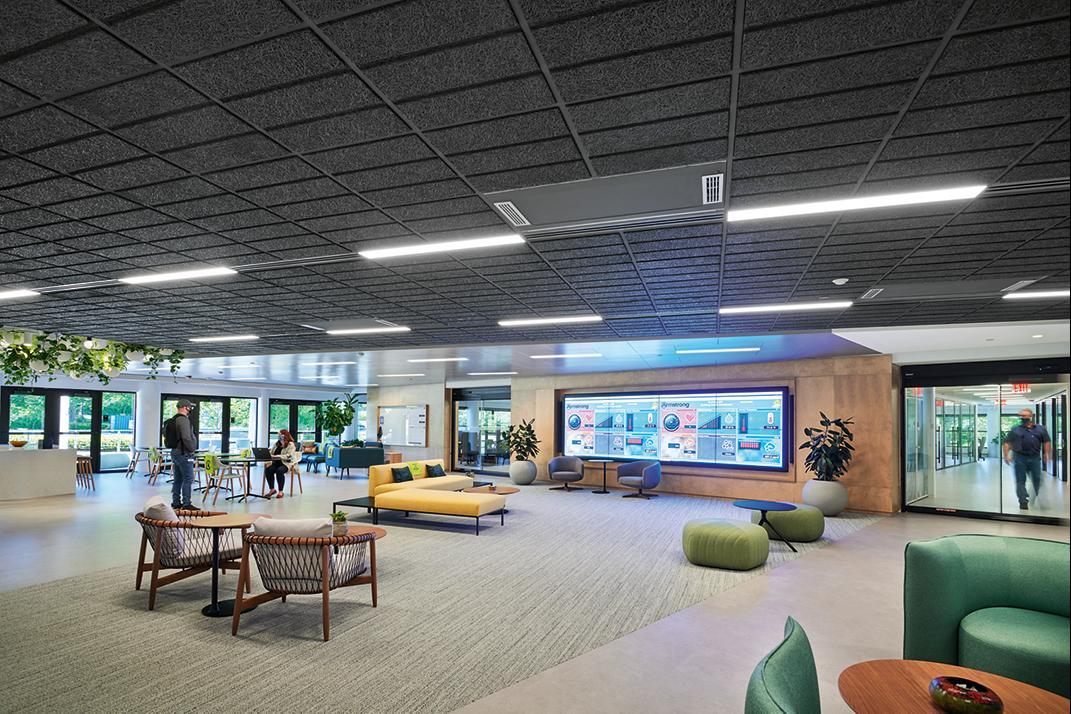
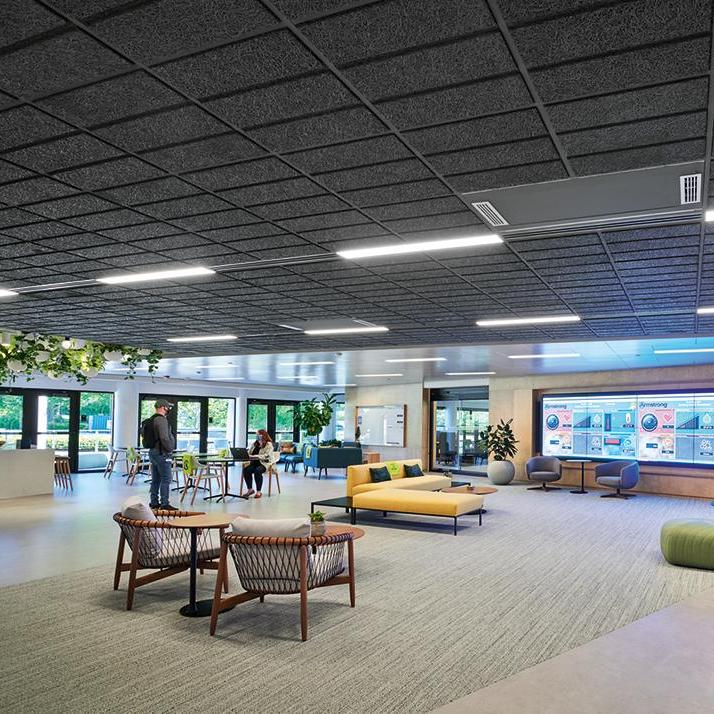
(Image: Inside the Living Lab at Armstrong World Industries' corporate campus in Lancaster, Pennsylvania, where the company is looking to implement ideas for the post-COVID office and gauge employee feedback.)
As the COVID-19 pandemic fades and vaccination rates improve, employers are working on plans for re-entry with an opportunity to reset previous environments. The benefits of working from home have given many people options for a more convenient, controllable and customizable workspace. Employers who want to attract and retain top talent will have to ensure that any work environment provides similar comforts.
The post-COVID office as a work-from-home experience
For some people, working from home has been a tough challenge. Noisiness, lack of space and family responsibilities are among the factors that could make some pine for their own cubicles. Many others, though, have been enjoying the ability to move freely about their homes, shifting from desk chair to couch or kitchen stool at will, breathing air they control, savoring the view from a favorite window, or taking their laptops out to the deck, patio or terrace.
Ideally, the post-COVID office would replicate these benefits of working from home, while also providing the social interactions and collaborative opportunities that factor into creativity, innovation and productivity.
The challenge for designers is how to choose the best solutions that make a real impact on people’s daily lives at work. Partly thanks to the green building movement, modern office design can be highly flexible, humanistic and appealing, and the options are many.
Employee surveys can offer some guidance. The ceiling and walls manufacturer Armstrong World Industries, for example, released an employee survey earlier this year which indicates employees expect their workspaces to support personal wellbeing, as well as assure health and safety, when they return in person.
Walking the healthy workspace walk
Armstrong is also observing the modern post-COVID office in action through the day-to-day experiences of employees working in its new Living Lab at the company corporate campus in Lancaster, Pennsylvania.
The Living Lab is the precursor to a renovation of the Armstrong headquarters building in partnership with global design and architecture firm Gensler. The experience from the Living Lab will inform this renovation.
The Living Lab began to take shape in 2020 with an initial focus on leveraging Armstrong’s sustainable products and other building elements to create indoor and outdoor workspaces that foster collaboration. That includes a working lounge, a working cafe, and rooms set aside for large and small groups, in addition to 24 individual work stations. Amid the COVID-19 pandemic, the program grew to include a focus on Armstrong’s Healthy Spaces air quality products. Sound, light and climate control are also key features.
Key themes: Information and flexibility
Employees began to occupy the Living Lab in May, and they are encouraged to provide detailed feedback on their experiences. Two key themes are already beginning to emerge.
One is information: During the COVID-19 pandemic, large swaths of the working public immersed themselves in the news. Armstrong employee feedback indicates people still expect a high level of information about the quality of their indoor environments, and the Living Lab is designed to deliver it.
Displayed at the entrance of the Living Lab is a WELL Health-Safety Rating Certification seal from the International WELL Building Institute, which Armstrong received in 2021. This certification provides a framework for organizations and communities to prepare for a safer and healthier future. When you see the WELL Health-Safety seal, you can feel confident knowing the space you’re entering is putting your health first, Armstrong says. Once inside the Living Lab, the first thing employees see is a dashboard displaying detailed information about the Lab’s indoor air quality, developed in partnership with HVAC services firm Trane.
Along with this displayed information, key design elements help to create a sense of well-being: Ample light beams in from the windows, work stations are spaced out for safety and privacy, and Armstrong products like AirAssure ceilings and VidaShield UV24 air purification systems are put to work maintaining air quality. The Living Lab also includes an outdoor working space fitted with furniture, power and Wi-Fi.
Employees took notice from the start. “The biggest elements that caught my attention were how fresh the space felt and smelled, the flexibility of the workspaces, and the natural light,” said Alexandra Waltemyer, Armstrong’s senior manager for Healthy Spaces strategic initiatives. “As soon as I walked in, the space was bright, and it felt clean and fresh. It even has a visible dashboard showing all of the measures for the indoor air quality, so I not only sensed the fresh air, I could visibly see things like temperature, humidity and particle count.”
Waltemyer also noted the ability to move between different environments, a key element that makes the Living Lab similar to the work-at-home experience. “Having the option to change between a private focus room, having a space to collaborate, or even working at the counter in the work lounge for a change of scenery has really helped keep me productive and inspired throughout the day,” she said.
Corporate social responsibility in the age of information
One especially interesting aspect of the Living Lab is its potential to inform and influence employees beyond working hours.
“Having the indoor air quality of the space I’m entering visible to me as I enter has made me crave even more knowledge of the air quality in the spaces I’m entering,” Waltemyer told 3p.
Meredith Baxter, Armstrong’s campus experience manager, had a similar experience. While citing the ability to move between individual and collaborative spaces as a key feature, she also emphasized the informational element.
“Every day upon entering the space, I can see a real-time air quality score that provides a sense of security of the overall ‘healthiness’ of the space,” she explained. “The visibility of the variables that impact the score make me wonder how I could incorporate similar measures in my home to identify areas for improvement to benefit the overall wellbeing of my family.”
Companies need to take lessons from the pandemic — and their employees’ home experiences, too
All in all, the Living Lab experience suggests that companies can leverage their products and skills to become a trusted partner for employees who seek reliable, accurate, and useful information about their indoor environment.
Socially responsible companies have long sought to attract top talent by informing and engaging on company-sponsored projects, including volunteering for student mentoring or environmental measures such as tree plantings. They have also had to prove that their quest to improve their social and environmental performance is one of deeds matching words. Now, the challenge becomes more complex.
As employees return to the post-COVID office — at a time when millions of job openings suggest companies are once again in a fierce competition for talent — executives will have to prove they are not only great places to work, but welcoming spaces where employees can be and feel their best, too. The Living Lab offers a testing ground for how to do that. While the initiative is still in progress, early insights indicate that by providing access to information and bringing the comforts and security of home into the workplace, companies can begin to show their responsiveness to the expectations of a new generation steeped in the lessons of COVID-19.
This article series is sponsored by Armstrong World Industries and produced by the TriplePundit editorial team.
Image courtesy of Armstrong World Industries
One Rolls-Royce is Decarbonizing; As for Those Luxury Cars, That Brand Has a Long Road Ahead

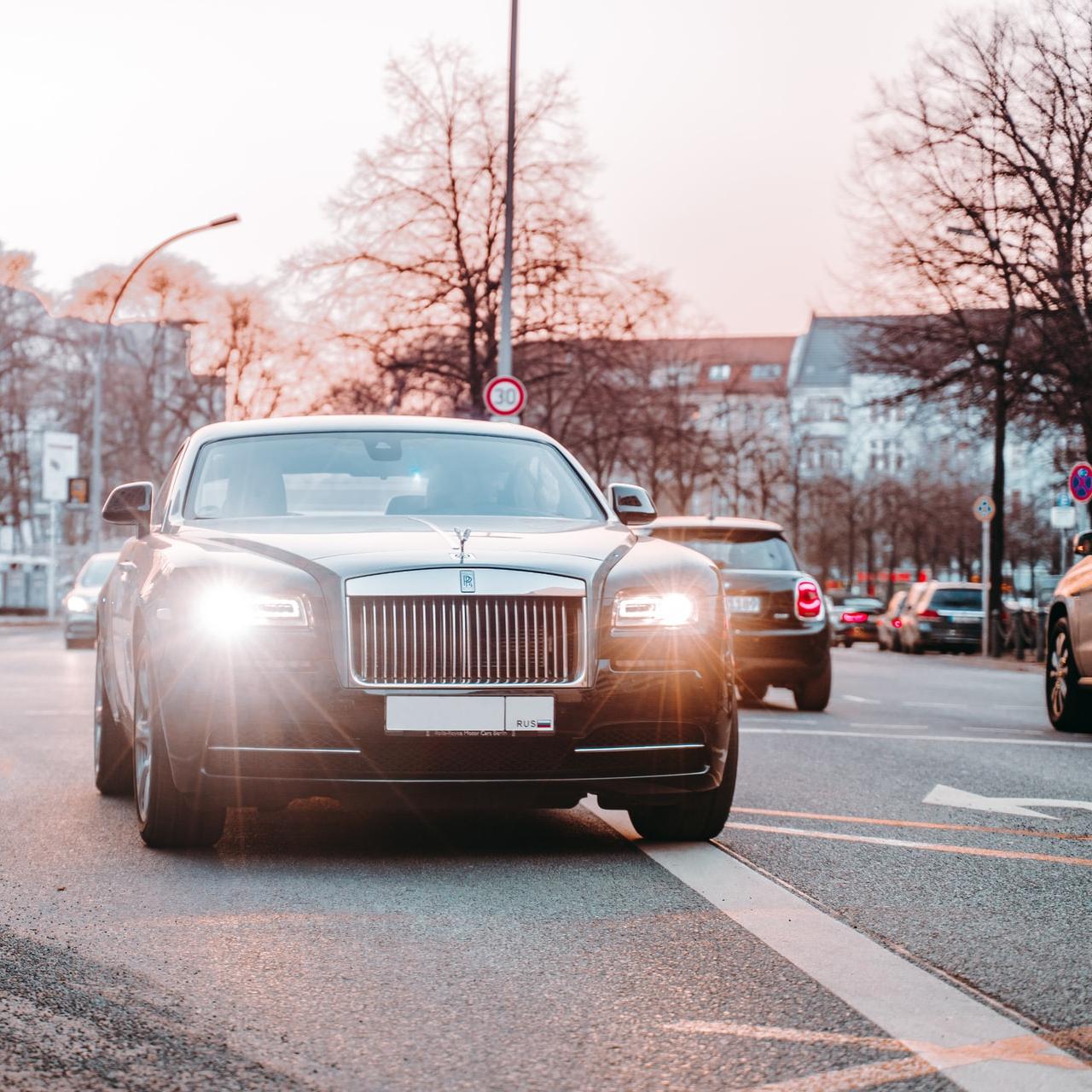
The aerospace giant Rolls-Royce Holdings seems to be on a firm path toward net-zero, but it’s been a different story for another company, Rolls-Royce Motor Cars, the automaker known as the drive of choice for the U.K’s royal family, super-successful entrepreneurs and other folks with money to burn. Rolls-Royce Motor Cars has long resisted electric vehicle (EV) technology, but it finally appears ready to give zero-emission mobility yet another turn at the wheel.
This is not your father’s electric car…it is your child’s
Rolls-Royce Motor Cars came into being in 2005, after BMW beat Volvo and other contenders for the rights to make cars under the ultra-exclusive luxury brand with a global reputation for satisfying the most exacting tastes.
The battle for the Rolls-Royce brand actually began in earnest in 1998, just around the time GM was struggling (and failing) to find a market for its groundbreaking EV-1 electric car. Among other factors, back in the 1990s EV batteries were considerably less than perfect, with long charging times, high costs and low range being the main obstacles. GM launched the car in 1996 and stopped producing it in 1999.
The EV-1 experience may have prompted higher-ups at Rolls-Royce to ignore newfangled electric drive technology and stick with tradition. After all, if EV technology was less than perfect, why would Rolls-Royce customers be interested in it?
The company did test the waters in 2011 when it introduced an all-electric version of the Phantom, at a car show. However, it disavowed any intention to put the vehicle into production, citing the inconvenience of long charging times as one factor.
Rolls-Royce Motor Cars also set the Internet on fire in 2017, when it built and donated a single child-sized electric car to a U.K. hospital. In an interesting twist, the tiny car was intended to be a therapeutic device, helping to reduce pre-operative stress by enabling children to drive themselves through the corridors. Try that with a gas engine!
Rolls-Royce Motor Cars let the EV opportunity slip by
On the flip side, at least one automotive entrepreneur took a different lesson away from the EV-1 debacle. That was, of course, Elon Musk, who introduced his first all-electric car in 2008 through the Tesla Motors startup he co-founded. Rather than producing an affordable EV for the masses, Tesla launched its first model, the Roadster, as an expensive, exclusive sports car that fit the bill for auto enthusiasts who value cutting edge technology and innovation. It cost more than $100,000 and the first run of 500 vehicles sold quickly.
Not to lionize Musk himself — after all, his performance on various measures of corporate responsibility ranges from mixed to dismal — but the focus on innovation and performance helped to lift all EV boats. In 2010 Tesla received a large Energy Department grant aimed at producing affordable EVs at scale, based on his success with the Roadster. That key endorsement from government policy makers provided U.S. automakers with key federal-level support to adopt EV technology.
Since 2010, the cost of EV batteries has dropped like a stone and the technology has improved significantly. Along with an ever-increasing gaggle of other EV startups, legacy automakers in the U.S. and elsewhere have also begun to formulate plans for an all-electric future. That includes EVs equipped with fuel cells, which produce electricity from a reaction between hydrogen and oxygen.
Also included in the all-electric mix are luxury brand names like Jaguar. While not nearly as exclusive as Rolls-Royce, the Jaguar name leans on a reputation for quality and performance, at a cost.
Best of both worlds for Rolls-Royce and BMW?
By 2020, BMW critics were loudly questioning the company’s failure to develop a soup-to-nuts, dedicated electrification strategy. Some were eager to see BMW agree to spin off Rolls-Royce, in order to focus more energy on electrification for the mass market. They also argue that the spinoff would enable Rolls-Royce to reaffirm its title to ultra-exclusivity, citing the successful example of Ferrari.
It appears that BMW is determined to have it both ways. In recent weeks, Rolls-Royce launched its Coachbuild service, which ups the ante on automotive perfectionism by offering “an extraordinary design collaboration between patron and artisan.”
In the meantime, Rolls-Royce’s tease of the all-electric Phantom back in 2017 was not just a tease, after all.
At the time, Rolls-Royce CEO Torsten Müller-Ötvös confirmed that hybrid electric cars would not roll off the company’s assembly lines — ever. However, that comment was just a precursor to the main thrust of his main point. Müller-Ötvös explained that 100 percent electrification was the wave of the future, meaning several years away. In 2017, he explained, the technology was yet not up to Rolls Royce’s exacting standards.
Apparently, much has changed in the past four years — including a growing number of countries and local governments that plan to restrict the sale or use of conventional gas-powered cars. Earlier this year, Rolls-Royce confirmed it is working on an all-electric version of its Shadow line, reportedly to be called “Silent Shadow.”
In a recent interview with Bloomberg Television, Müller-Ötvös described how zero-emission electric technology complements the company’s brand identity.
"Electrification fits perfect with Rolls-Royce -- it's torquey, it's super-silent," he told Bloomberg. "We are not known for roaring loud engines and exhaust noises whatsoever, and that is a big benefit.”
The significance of a verrrry expensive electric vehicle
The announcement of an all-electric Rolls-Royce is a significant one because it helps to cement zero-emission technology in the popular imagination as a mature form of automotive engineering, one that is worthy of attention from firms with a reputation for delivering the ultimate automotive experience.
On the other hand, one electric car model may not seem like a big deal. It’s not, at least in terms of raw numbers. The iconic Silver Shadow, for example, is known as Rolls-Royce’s top selling passenger car, and it produced a total of only 38,000 units during its 11-year run from 1955 to 1966.
In contrast, Tesla’s all-electric Model S has sold more than 250,000 units since its introduction in 2012, and other automakers plan to introduce millions of their own zero-emission vehicles in the near future.
However, Coachbuild could be the secret weapon up Rolls-Royce’s sleeve.
Given the collaborative identity of Coachbuild, it is only a matter of time before someone with deep pockets and a passion for electric cars takes advantage of the new service.
Like the Roadster before it, the new Rolls-Royce all-electric Shadow could be the rising tide that lifts all boats even higher in the EV market of the future.
Image credit: Leon Seibert/Unsplash
Visibility is Vital During Pride Month — and Every Month, Says This Executive

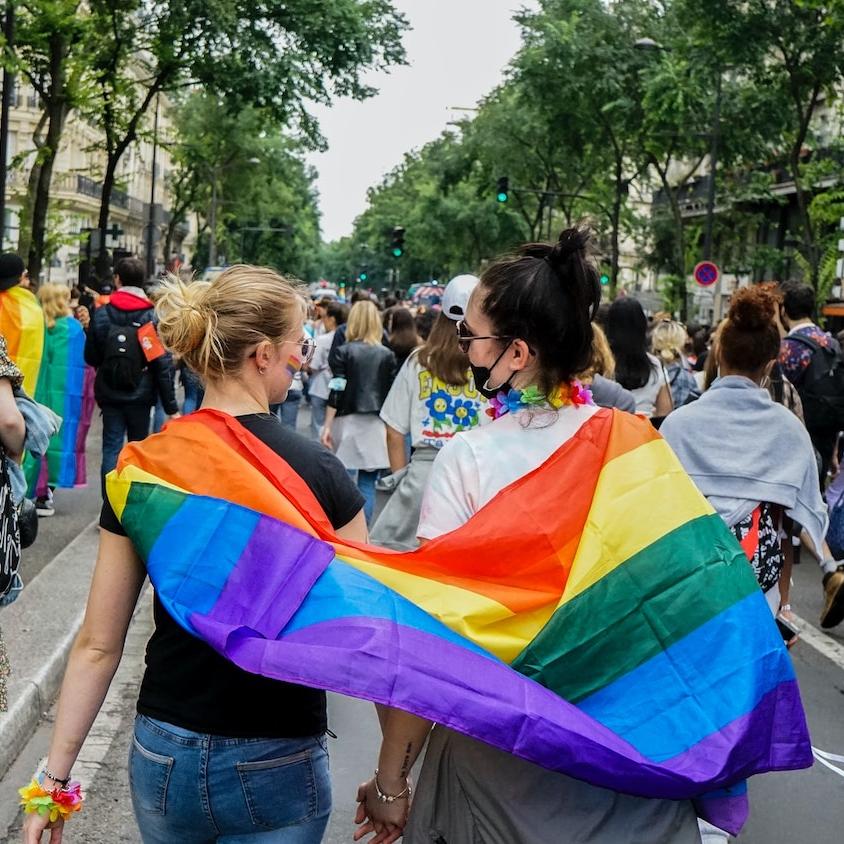
This article is sponsored by Procter & Gamble
For more than five decades, Pride Month has brought millions of LGBTQ+ individuals, advocates and allies together to celebrate the impact of the LGBTQ+ community. But as the world grapples with COVID-19, the past two Pride Months have certainly looked different.
Many in the LGBTQ+ community continue to face unique challenges as a result of the pandemic, including loss of livelihoods, lack of access to critical life-affirming healthcare, increased domestic violence and social isolation with the closure of local community services. LGBTQ+ individuals are more likely than the general population to live in poverty and lack access to adequate medical care, paid medical leave and basic necessities. In addition, a disproportionate number of LGBTQ+ people work in restaurants, retail, arts and entertainment, and education — industries impacted greatly by COVID-19.
Plus, Pride Month is typically a critical time to raise funds to support LGBTQ+ organizations year-round, which can be impacted when events are canceled.
At P&G, we believe in leading with love, the power of our differences, and the impact our brands and company can make when we come together united by shared values and purpose. When we act as a force for good and a force for growth, there is a positive impact not only for our business, but for the communities we serve. After the year that it’s been, there has never been a more critical to find new ways to reach LGBTQ+ people, raise their visibility, and reaffirm our commitment to equality and inclusion while helping those that need it most.

Can’t Cancel Pride
For the past two years, P&G and iHeartRadio have joined forces for Can’t Cancel Pride, a virtual relief benefit that brings together some of the biggest names in culture and entertainment to raise funds and visibility for the LGBTQ+ community during Pride Month. In 2020, we were able to donate more than $4 million to six LGBTQ+ organizations: GLAAD, SAGE, National Black Justice Coalition, The Trevor Project, CenterLink and OutRight Action International.
This year’s event, which can be viewed through June 30, demonstrated that nothing can cancel the heart of Pride and the spirit that the LGBTQ+ equality movement embodies while focusing on the issues that continue to impact the LGBTQ+ community, including the ongoing COVID-19 pandemic. Hosted by Bebe Rexha and on-air personality Elvis Duran, the hour-long event also featured performances and appearances from Demi Lovato, Elton John, Jojo Siwa, Leslie Odom Jr., Lil Nas X and more. Our goal is to raise even more support than last year's event, as the pandemic continues to have a damaging effect on the fundraising efforts that LGBTQ+ organizations rely on to survive — and we’re proud to share that since the program premiered on June 4, we have already surpassed last year’s donations.
Can’t Cancel Pride may have initially been created to drive visibility and support for the LGBTQ+ community impacted by COVID-19, but the truth is, this community faces complex and significant obstacles every day, whether we’re in a pandemic or not.
While this year’s Pride Month features fewer masks and more in-person celebrations, the meaning and purpose behind advocating for and celebrating the LGBTQ+ community is just as, if not more, important.
Be seen, be heard, be proud
LGBTQ+ inclusion is expanding every day in the media landscape, but not in advertising. A recent study found that only 1.8 percent of characters in ads at the Cannes Lions festival were LGBTQ+. What people see and hear in media and advertising impacts decisions made in schools, hospitals, boardrooms, newsrooms, courtrooms, homes and at the voting polls. Simply put, there is still significant work that needs to be done to ensure that companies and brands are including LGBTQ+ people in their ads and marketing to the LGBTQ+ community in authentic, positive and impactful ways.
That’s why we teamed up with GLAAD to launch The Visibility Project, a new campaign to drive and sustain LGBTQ+ inclusion in ads and marketing and to leverage the power of these mediums to accelerate LGBTQ+ acceptance. With The Visibility Project, P&G will commit more than $1 million over the next three years and partner with GLAAD to bring together the world’s top brands and ad agencies working to advance LGBTQ+ inclusion in media by creating and providing tools, techniques, and resources for industry executives to inspire other communities, companies, and organizations to harness the power of advertising to create a more inclusive world. The Association of National Advertisers’ Alliance for Inclusive and Multicultural Marketing (AIMM) is also working with us to expand The Visibility Project and create LGBTQ+ resources for the greater ad industry.
If you can’t be seen, you can’t be heard — and there’s no doubt that media and advertising affect perceptions, culture and ultimately, how people see each other and themselves. While we can see progress in many areas, we still have work to do. My hope is that as more brands and businesses meaningfully engage in supporting equality and inclusion, the experience of equality and the feeling of belonging are achievable for all.
Learn more about joining The Visibility Project.
This article is sponsored by Procter & Gamble
Image credits: Unsplash/Norbu Gyachung and Procter & Gamble
What Do Sustainable Agriculture and Healthcare Equity Have in Common?
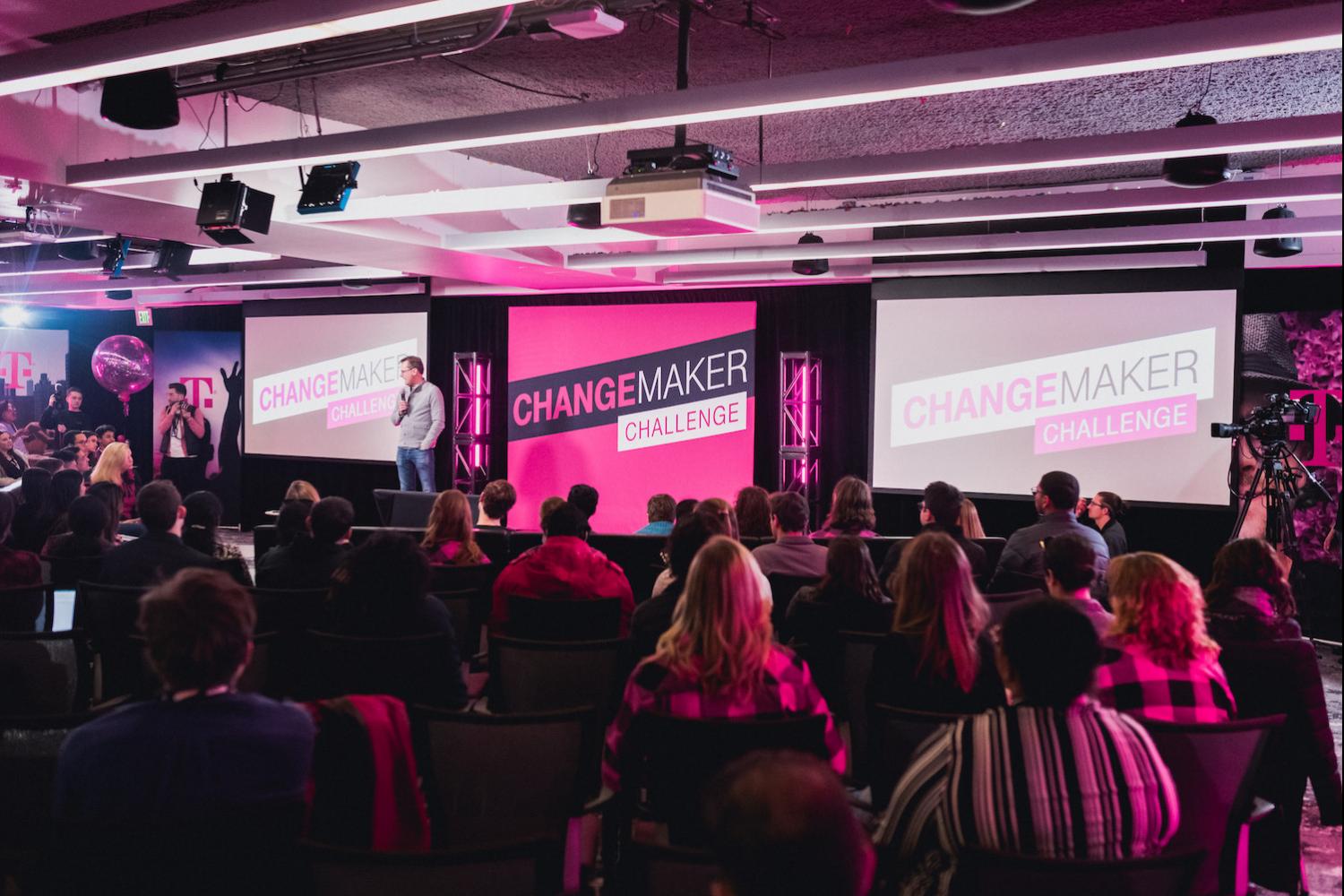
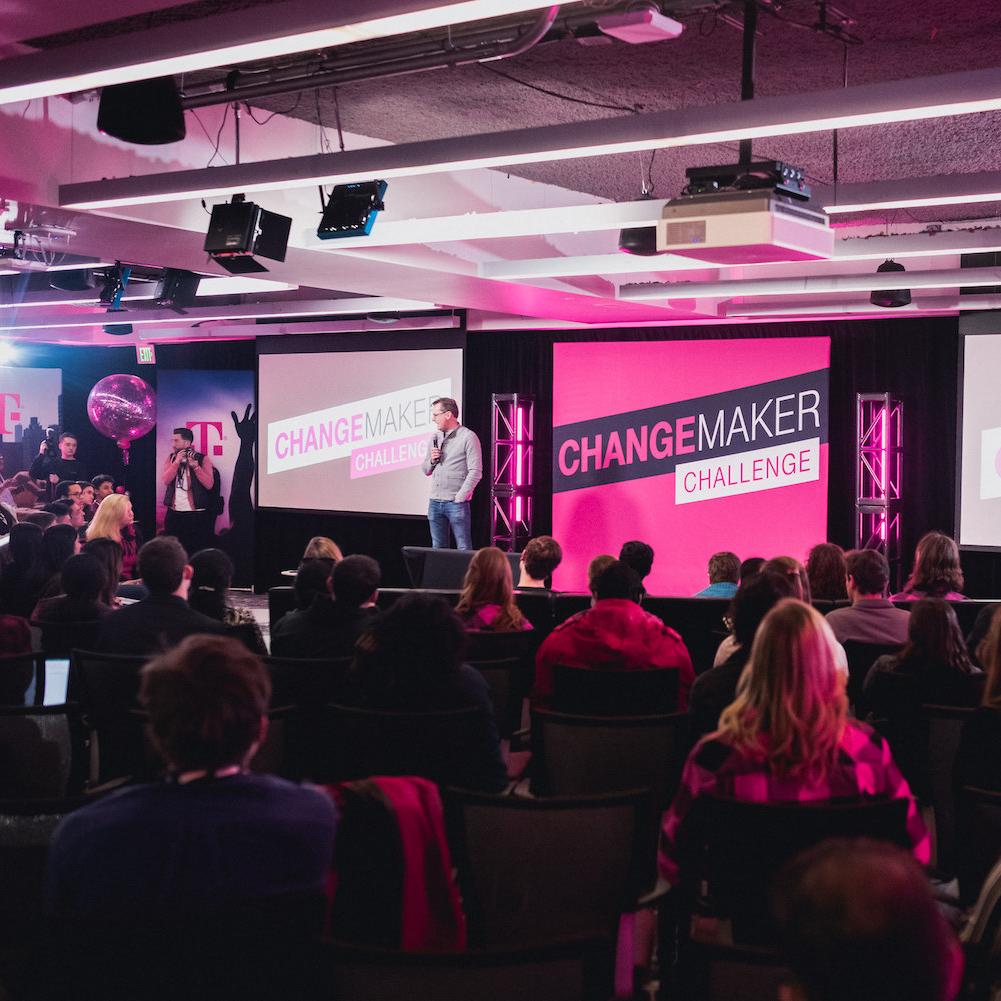
(Image: T-Mobile CEO Mike Sievert announces the winners of the 2019 Changemaker Challenge, a nationwide contest that mobilizes young leaders with seed money and mentorship.)
From globally organized protests to individual acts of courage that spark national dialogue, the efforts of young leaders and activists have commanded attention around the globe in recent years. The power of youth-led solutions to address the world’s most pressing issues has not only garnered headlines, but it has also led to meaningful conversation and targeted action on topics as varied as climate change legislation, economic inequality and racial justice.
That’s what two seemingly unrelated issues — sustainable agriculture and healthcare equity — have in common: They’re the focus of Aqua-Pods and Medicine Encompassed, two organizations started by young leaders who were recently named winners of the 2021 Changemaker Challenge, a nationwide contest sponsored by T-Mobile, the T-Mobile Foundation, and Ashoka that mobilizes youth who have trailblazing ideas on how to change the world for good with seed money and mentorship.
Challenge as opportunity
When Aarushi Wadhwa was in 7th grade, she made a connection that would lead her to found a water conservation startup that helps community farmers across the globe. After learning in science class about diffusion and osmosis, she noticed that she and her classmates, who volunteered to water campus greenery as part of the school’s environmental club, were unintentionally overwatering plants. Gallons and gallons of water used to moisten the soil around trees, for example, were actually evaporating into the air. This overwatering was wasting water and also killing plants.
“I did research and realized that overwatering is actually a global problem,” said Wadhwa, now a rising high-school senior. “Once I realized how big of an issue it is, I knew I had to do something about it.”
After building a team of fellow teens from local schools in San Jose, California, and beta testing an initial product, Aqua-Pods was born. Aqua-Pods is a plant-based, biodegradable sponge filled with pre-curated natural fertilizer that combats water waste and leads to more fertile soil. It is placed around the periphery of the root of a plant to deliver water and nutrients. “Sometimes the simplest thing can make a big difference,” Wadhwa added.
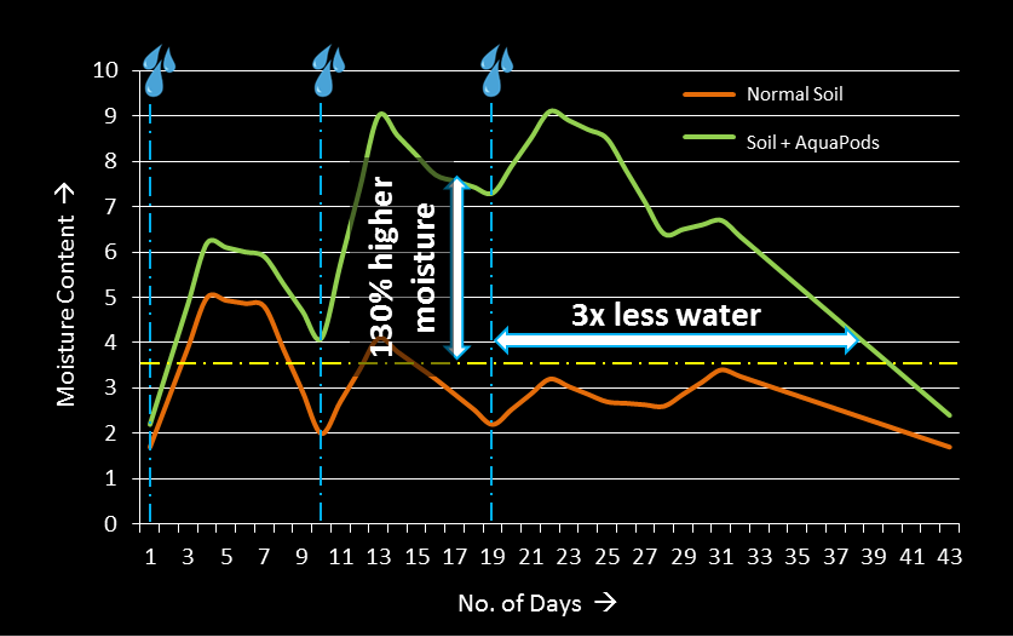
When the pandemic hit, Wadhwa identified an immediate need for her product when she learned that people were tending their community gardens less due to stay-at-home orders, and therefore plants were not getting the water they needed. This was of particular concern in water scarcity-prone areas, so she decided to donate Aqua-Pods to international efforts in Nairobi, Kenya, and New Delhi, India, through partnerships with existing on-the-ground organizations.
A similar can-do attitude is clear in what Aliza Lopez and Gael Gonzalez-DeLaLuz have created in response to the lack of diversity in the medical field. They started Medicine Encompassed, a student-run nonprofit organization working to solve the problem of underrepresentation in medicine, to highlight the inequities and underrepresentation of all minorities in the medical field and prepare youth to bridge that gap.
“It’s really important for us to include diverse perspectives in the medical profession,” said co-founder Gonzalez-DeLaLuz, a rising junior in high school in New Brunswick, New Jersey. “We need to level that playing field.”
Collaborative from the start
Gonzalez-DeLaLuz and Lopez met in 6th grade and have considered themselves a dynamic duo ever since. Having collaborated on projects in the past that integrated their inherent love for the sciences, they decided to launch Medicine Encompassed last year after discovering something else they had in common. As first-generation, low-income students who speak a language other than English at home, both have visited hospitals with family members on multiple occasions, finding themselves unable to communicate with doctors due to the language barrier.
With the rise of the pandemic last year, which disproportionately affected people of color, they saw their mission as more important than ever.
Medicine Encompassed increases access to medical careers for underrepresented minorities and students from low-income backgrounds. Offering free medical career readiness resources on their website, the Medicine Encompassed community includes 1,500 members from 50 U.S. states and 35 countries around the world. All of the educational resources provided online are sourced from and shared with their community.
“One thing I’ve been surprised with is our output,” said Lopez, also a rising high-school junior in New Brunswick. “We’ve managed to produce over 500 articles, resources and supplemental worksheets in one year. I think two heads are better than one, and this [has been] accelerated by having an entire community. What started with two people has expanded to thousands of people around the world.”
This level of collaboration is inherent in the work of this generation, dubbed Generation Z.
Wadhwa, who has partnered with everything from local nurseries to Starbucks to maintain a steady supply of natural fertilizer ingredients for her product, views collaboration as a key tenet of Aqua-Pods success. Through various events and international collaborations, Aqua-Pods has reached approximately 2,500 people with information about the global water crisis. Along with providing a product that supports water conservation, she and her team of fellow high-schoolers share educational materials on over and under-watering with the hopes of inspiring people to take water-saving steps in their own communities.
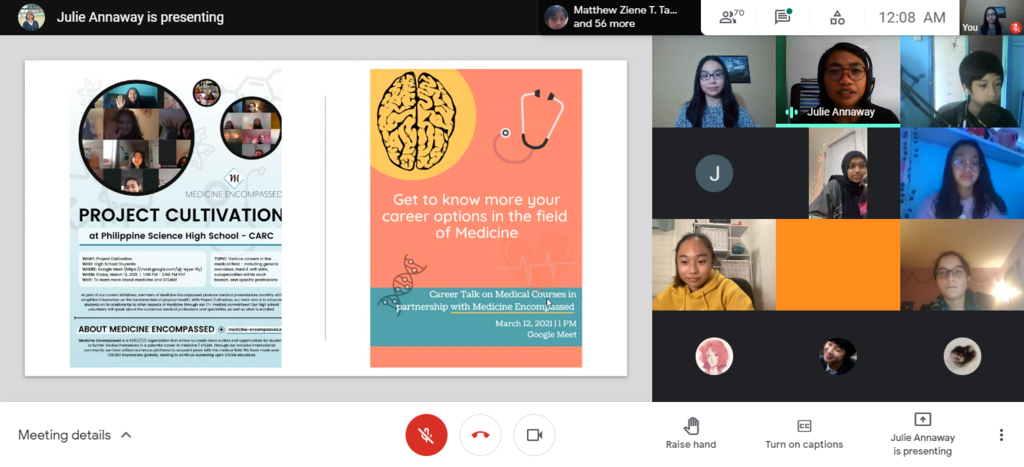
Going global
Wadhwa, Gonzalez-DeLaLuz and Lopez view their recent Changemaker Challenge win as just the start of what they hope to contribute to their respective causes.
Already thinking of her role in addressing the global water crisis, Wadhwa hopes to turn Aqua-Pods into a scalable solution for all agricultural market segments — from house plants to commercial nurseries and farms around the world.
Gonzalez-DeLaLuz and Lopez are thinking big, too. They are planning the first Medicine Encompassed virtual conference, a four-day global event later this summer featuring a series of panels aimed at further educating its community on different careers in medicine and other science, technology, engineering and mathematics (STEM) fields.
“We are a global community,” Gonzalez-DeLaLuz said.
Even more, these winners know their global scope demonstrates that age is not an obstacle for young leaders, but an asset.
“Age does not define impact,” Lopez added. “Regardless of how old or young you are, you can still pave an avenue to create impact in your community as long as you have the capability to do so. Winning this challenge says a lot about how much we are able to do in spite of our age.”
This article series is sponsored by T-Mobile and produced by the TriplePundit editorial team.
Images courtesy of T-Mobile, Aqua-Pods and Medicine Encompassed
Space Junk, the Final Frontier for Sustainability

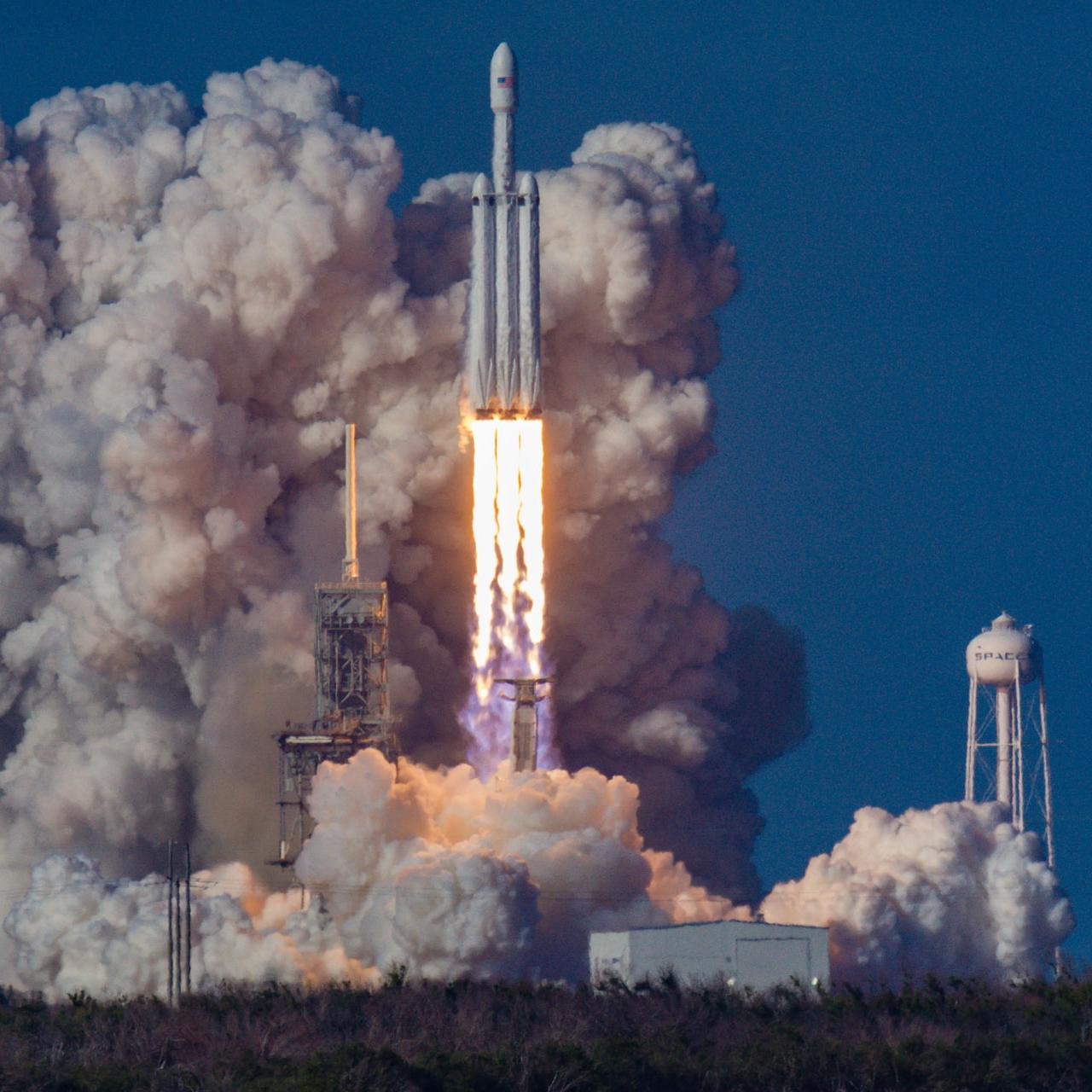
As space exploration becomes commonplace and more sophisticated space equipment is set to soar above Earth, therein grows the risk of more space junk coming back to the planet’s surface. At last count, there are more than 3,000 satellites orbiting the planet. Meanwhile, more rockets have been launched into space, and we’re not far away from the private sector starting trips into outer space on a regular basis.
For a while it may be only the wealthiest who can afford decadent trips aboard spacecraft, but concern over space junk and what that means for the planet keeps increasing. And no, we’re not talking about billionaires’ unwanted gadgets being tossed out of some random spacecraft’s cargo hatch. With more rockets being launched and more outdated satellites living out their usefulness, there is a greater chance, even if very slim, that space debris could become a problem – witness the attention given earlier this year when many let out a sigh of relief after a Chinese rocket crashed into the Indian Ocean instead of a nearby continent.
Now a coalition wishes to get ahead of space junk before it comes anywhere close to becoming a problem.
A group of organizations including the World Economic Forum (WEF) recently developed the Space Sustainable Rating (SSR), which seeks to get a handle on space junk. The standards seek to ensure that future – and more numerous – outer space missions launch, orbit and return to Earth safely and sustainably.
Organizations involved in space exploration will be able to measure their missions’ responsibility and safety based on several factors including data sharing, their missions’ choices of orbit, steps they take to avoid collisions, how they will decommission satellites once they are no longer useful and finally, how well such missions will be monitored and identified from Earth.
The SSR initiative took two years to develop, with input coming from WEF, the European Space Agency (ESA) as well as a team that included the Space Enabled Research Group within the MIT Media Lab, the engineering firm BryceTech and the University of Texas at Austin.
SSR comes in the wake of other plans to de-clutter Earth’s orbit. For example, the ESA has in the works a mission that will clean up some space junk in 2025, to be completed through a partnership with the Swiss startup ClearSpace.
It’s true that for now, the risk of space debris hitting an urban area are less than very slim. Nevertheless, concern for what could happen if such an event occurred does have precedent: A nuclear-powered satellite belonging to the Soviet Union that crashed in a remote area of Canada in 1978 left behind radioactive debris that resulted in environmental remediation costs of more than $11 million. Canada asked the Soviet Union’s government to pay for that cleanup project; reportedly the Canadian government received less than half that amount.
Hence any environmental risk is matched by reputational risk should a company’s property cause mayhem here on Earth at ground level. Sure, international space law in theory protects you if an obsolete satellite or wayward rocket lands on your property, but the reimbursement process isn’t as seamless as filing a claim with your homeowner’s insurance policy. “Basically, if a piece of space junk from China landed on your house, your own country's government would make a claim for compensation through diplomatic channels and then pay you,” wrote Timiebi Aganaba for Salon earlier this month, adding: “if they chose to make the claim at all.”
Image credit: Bill Jelen/Unsplash
Plant-Based Foods Are Shaping Up, Out, Flat and Curved


They’ve long had a vegetarian menu, have had on- and off- and then on-again flirtations with potatoes, and thereby considering the fast food industry’s overall reputation, Taco Bell locations have long been the plant-based go-to choice for many vegetarians and even vegans.
While other chains have hopped aboard the plant-based filling bandwagon, Taco Bell has been one notable holdout, though evidence suggests that is changing with some of the brand’s recent dalliances, such as a recent one with Beyond Meat.
Now Taco Bell has taken another step in its plant-based dance, this time with a pilot that just wrapped up, literally, in Orange County with its popular chalupa menu item.
In case you don’t know what a chalupa is, that is understandable, as the editorial board did not know either and therein the team undertook some extensive research. For Taco Bell, a chalupa is a fried flatbread, similar to Navajo fried bread or funnel cake, only it’s curved like a gringo hard-shell taco and packed with fillings of your choice. And for those on a keto or high-protein kick, there’s another option available at times, one for which the fried shell is made of chicken meat and the fillings include cheese, vegetables and sauces. Think of it as an inside-out taco, only that it truth it really isn’t.
“Oh, those? They are made from fried masa (cornmeal) and then filled with whatever,” said a Mexican-American friend of 3p in an email exchange. “Pretty sure they are originally from Oaxaca in the south, but maybe another state, and while they are supposed to be boat-shaped, they are usually flat, like an American-style tostada.”
If Google Translate is your phrasebook of choice, you’ll find the English translation for chalupa, as in “shallop,” which is a light sailboat generally only used in shallow waters.
Okay, so what does all this history have to do with potential plant-based options at Taco Bell? Bottom line, the company has been testing out a plant-based chalupa shell made from pea protein. So, if you want that protein fix from a chicken shell but wish to have none of the guilt, there is a chance this could be a future menu item at a Taco Bell near you.
For now, this American Vegetarian Association-approved fake chicken, pea protein, plant-based taco shell was only available until yesterday, June 27 (or until they ran out) at a location in Irvine, California (the one off the 405 and the 55, near the Costco). As of press time, the company has not committed to a company-wide rollout for this or other new plant-based protein items, but in a press release the company said it “remains excited about teaming up with Beyond Meat” as it considers ideas for new menu items.
Image credit: Taco Bell
Finally Quantified: Tree Equity Has an Impact on Poorer Neighborhoods


The effects of the decades-long systematic denial of mortgages to people of color, called redlining, are undeniably visible across the country. One effect has been the persistence of poverty in predominantly Black communities across the United States. Another is a distinct lack of tree cover in these communities. For the first time, the inequality in neighborhood vegetation has been quantified through the Tree Equity Score, developed by the nonprofit conservation organization American Forests.
Assessing nearly 500 municipalities representing more than 70 percent of the U.S. population, staff at American Forests found that neighborhoods consisting mostly of people of color have an average of one-third less tree canopy than majority white communities.
What’s the issue with tree equity, or lack thereof?
The prevailing problem with having too few trees in an urban area is the heat. Some neighborhoods have so much exposed concrete absorbing sunshine that they become heat islands, which can be up to 10 degrees Fahrenheit warmer than nearby areas with natural cover. One study found that urban heat islands can experience warming up to twice as strong as that caused by global warming.
In the face of elevating heat, the Tree Equity Score opens new opportunities for effective planting. Its tally puts an exact number on the trees needed to achieve equity amongst neighborhoods, leading to better health and livability. American Forests has calculated a total of 522 million trees needed nationwide, but not planted just anywhere. The online, publicly-accessible map shows exactly where cities need to plant trees — the goal, after all, is community uplift through equity.
“We don’t just need more trees in America’s cities. We need tree equity,” Jad Daley, president and CEO of American Forests, told Fast Company.
500 million trees create four million jobs
How exactly would the nation benefit from planting over 500 million trees? American Forests outlined the benefits, including over nine million tons of carbon absorbed each year, equivalent to 92 million cars removed from the road. Communities across the nation would be able to mitigate over 56,000 tons of particle pollution each year as well, the organization announced in a press release.
As communities and cities, regions and states set about planting trees, they would create almost four million jobs in the process, American Forests estimated, notably in neighborhoods that tend to have the highest unemployment rates.
Putting a monetary value on savings, the nonprofit claims urban tree equity would save the nation over $5 billion each year through the climate, air quality and water services trees provide, not to mention an appreciation in property values (which could result in more Black Americans build intergenerational wealth, long denied to many families) along with more recreational opportunities.
Cities are putting the tree database to use
Some cities are already leading the way to greater equity through green infrastructure. Earlier this year, with support from the new data, Phoenix became the first city in the U.S. to pledge to achieve tree equity. Scores, such as the one available on the American Forests site, helped persuade the city council to take that step in April. As a whole, Phoenix has a Tree Equity Score of 80 out of 100, but individual communities can vary from 83 to 26.
Tucson is also leading the way by using tree equity to guide investments in urban forestry and stormwater management, American Forests reported. Phoenix and Tucson were among the pilot cities for the Tree Equity Score.
How can other cities follow Arizona’s lead? With applications from planning to fundraising to policymaking, the Tree Equity Score gives detailed insight into each census block group within a metropolitan area, as American Forests notes on its website. One block group in Phoenix’s Avondale community, for example, has a score of 29. Factoring into that score include a canopy cover of three percent (with an 18 percent goal), a high number of children, a 16 percent unemployment rate, high temperatures and poverty. Just east of that block group, still in Avondale, neighbors enjoy a score of 85, with nine percent canopy cover, two percent unemployment, lower temperatures and minimal poverty.
American Forests has recommended that localities use the nonprofit’s detailed Tree Equity Scores to estimate and compare the climate and health impacts of different planting scenarios. Each city, community and neighborhood are different, needing a unique strategy for planting. In a press release, American Forests names Chicago, Detroit, Los Angeles and Philadelphia among the cities that would benefit the most from taking action on tree equity.
Image credit: Jimmy Conover/Unsplash
Aerospace Giant Rolls-Royce On the Flightpath to the Net-Zero Economy
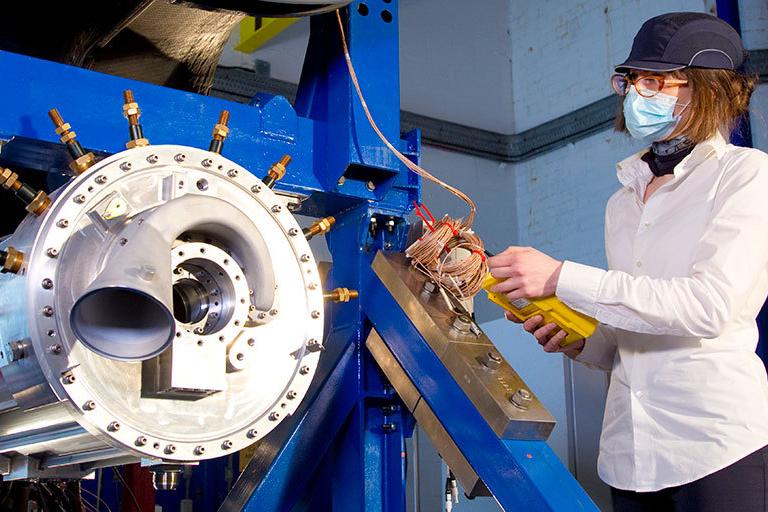

In another sign that the great pivot to net-zero emissions is well under way, the legacy aerospace and defense contractor Rolls-Royce Holdings has just announced a raft of new programs aimed at bringing down the carbon footprint of its products. The company’s ramped-up focus on clean technology could also make a significant impact on the global aviation sector as well as other hard-to-decarbonize industries.
A shift toward net-zero
Recently, Roll-Royce announced that it is firming up its decarbonization goals over multiple branches of the company. The latest Rolls-Royce announcement reflects the diversity of its operations, and its potential ability to interconnect with other sectors to accelerate the global net zero movement.
For example, Rolls Royce is currently developing a more efficient, next-generation version of its large-scale Trent XWB aircraft engine, with the expectation that the improvement will help make sustainable aviation fuels more economical, more quickly.
On its power systems business, Rolls Royce has also launched a microgrid system that can apply to industrial processes, and it is part of a small nuclear reactor (SMR) consortium that aims to decarbonize entire cities of up to 1 million people.
Meeting the expectations for next-level sustainability
Improvements in aircraft engines (such as the one pictured above) and nuclear reactors may (or may not) be a necessary part of the global net zero journey, but they also represent modifications of existing technology in which shortcomings have already been exposed.
Bio-based aircraft fuels, for example, raise food supply and land use issues that have become even more fraught as the climate crisis worsens and a global biodiversity implosion looms.
In a similar vein, the emerging cybercrime crisis has highlighted vulnerabilities in the security of nuclear energy, exacerbating public fears about nuclear accidents and firming up local opposition to new nuclear power plants.
Though wind and solar projects may still attract local opposition, and routes for new transmission lines may also be matters of contention, those technologies do not carry the kind of cultural freight that conventional biofuel farming and nuclear energy have accumulated.
Accordingly, Rolls-Royce says it is also focusing on the parts of its business that could take advantage of the falling costs of wind and solar power. Some of its projects have already moved beyond the demonstration phase to enter the commercial market.
“We are investing in battery storage technology, demonstrating fuel cells and building a leading position in all-electric and hybrid-electric flight,” the company explains.
All-electric flight is still in the early stages, but the company has set a goal of more than 100 miles of flight on a single charge.
In addition, Rolls-Royce has built a new zero-emission fuel cell demonstrator project at its Friedrichshafen plant. The new demonstrator is designed to proof stationary power sources that could be used for emergency backup power, or to restart a system that has gone completely offline, in addition to serving as a main power source.
Turning the R&D ocean liner around
Rolls-Royce currently lists 50 percent of its gross R&D spending on “lower and net-zero carbon technologies,” and the new pledge will boost that total upward by 75 percent in less than five years, by 2025.
That will help bring Rolls-Royce’s own operations down to zero-emission status by 2030, according the company.
A far more challenging task is reducing the impact of Rolls Royce products across other segments of its business. That area is more formidable, partly because of the company’s role in the military sector where both performance and logistics are twin priorities that can present hurdles to new technologies. Nevertheless, the company has pledged to make its future combat-grade systems compatible with net-zero goals in only two years.
The maturing of a zero-emission military market could make an enormous difference in the rate of global decarbonization. The U.S. Department of Defense is legendary for its lavish spending on R&D, and in recent years that has included copious spending on new solar cells, energy storage systems, and other aspects of clean technology.
Rolls-Royce’s net-zero plans stand to gain from its military contracts in the U.S. Though domestic firms like GM are better known as suppliers to the U.S. military, Rolls-Royce also plays a key role. As of Fiscal Year 2020, the company ranked 36th in a field of 100 top U.S. Department of Defense's preferred contractors.
With Rolls-Royce firmly planting its feet in decarbonization mode, look for more legacy transportation, power systems and defense firms to dive into the net-zero pool.
Image credit: Rolls-Royce/Twitter
Recycled Lego Bricks? They Could Be Coming Soon
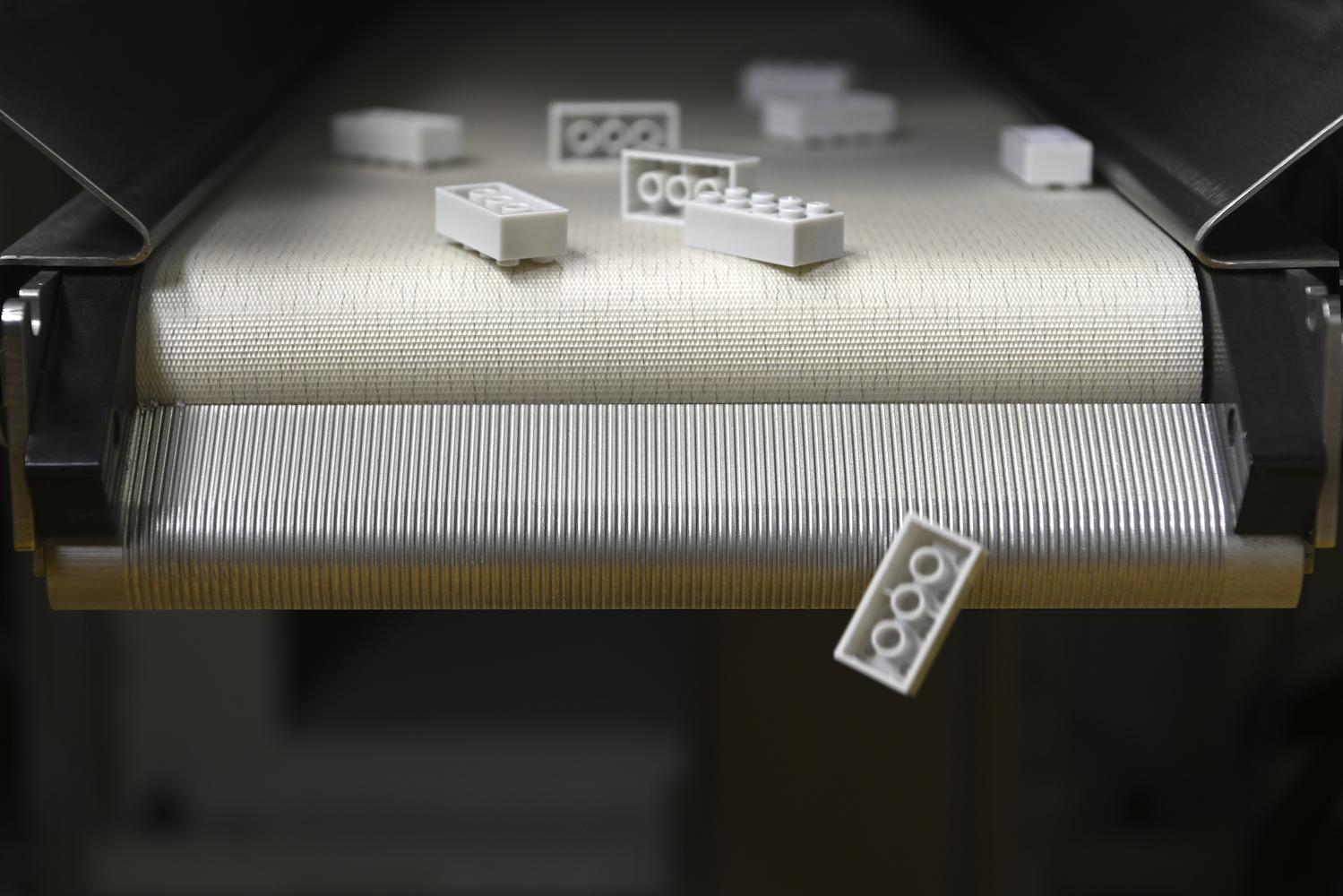

Prototype recycled Lego bricks in the lab.
While legions of fans already consider the iconic Lego bricks objects of perfection, the company is preparing an upgrade that would maintain the bricks' special locking prowess and improve their sustainability performance.
This week, the Lego Group introduced a prototype brick made from recycled polyethylene terephthalate (PET), the plastic used to make beverage bottles.
“We are super excited about this breakthrough,” said Tim Brooks, vice president of environmental responsibility at the Lego Group in a prepared statement. “The biggest challenge on our sustainability journey is rethinking and innovating new materials that are as durable, strong and high quality as our existing bricks – and fit with Lego elements made over the past 60 years. With this prototype we’re able to showcase the progress we’re making.”
Company researchers spent the past three years testing and retesting more than 250 versions of PET materials and other types of plastic to find one to make the perfect brick. The results are bricks that meet what Lego says meet both safety and play requirements, such as that coveted clutch power, which allows the bricks to solidly lock together, according to the company.
The recycled PET that is the base of these bricks comes from suppliers that adhere to the U.S. Food and Drug Administration (FDA) and European Food Safety Authority (EFSA) protocols for safety and quality. The PET material has been combined with additives to make it more durable.
A one-liter plastic PET bottle provides approximately enough material for 10 Lego bricks with two bumps across and four lengthwise. About 60 billion Lego bricks are produced each year; the world is home to more than 400 billion Lego bricks.
New materials would be a big change for the long-time familiar product. For almost 60 years, a plastic called ABS (acrylonitrile butadiene styrene) has been used to make the majority of Lego pieces. ABS provides Lego bricks with their easily-recognizable colors, shine and famous locking ability.
Reworking its brick formula is one aspect of Lego Group’s ongoing sustainability efforts. The company revealed a three-year plan in 2020 to spend up to $400 million on social responsibility and sustainability programs. By 2022, manufacturing operations are expected to be carbon neutral. The company also has its sights on converting all of its packaging to sustainable materials by the time 2025 ends; last year plans were announced to start removing single-use plastic from all boxes. And three years ago, LEGO Group began making accessory pieces from bio-polyethylene (bio-PE), developed from sustainably- sourced sugarcane. bio-PE is used for LEGO trees, branches and accessories for mini-figures.
Existing Lego sets also can get an extended life through the Replay program, which helps owners pass on their used bricks. Donors put their bricks in a box and print out a free shipping label, and put the box in the mail. Lego Group is collaborating with organizations such as Teach for America and the Boys and Girls Clubs of Boston to pass the bricks on to new eager builders.
Recycled plastic bricks are still a long way from hitting the shelves, however. Another round of tests on the new material could take up to a year, the company said. After further assessments, Lego’s team of researchers will decide whether to launch pilot bricks.
“We know kids care about the environment and want us to make our products more sustainable,” noted Lego’s Brooks. “We’re committed to playing our part in building a sustainable future for generations of children. We want our products to have a positive impact on the planet, not just with the play they inspire, but also with the materials we use. We still have a long way to go on our journey but are pleased with the progress we’re making.”
Image credit: Ryan Quintal/Unsplash and Lego